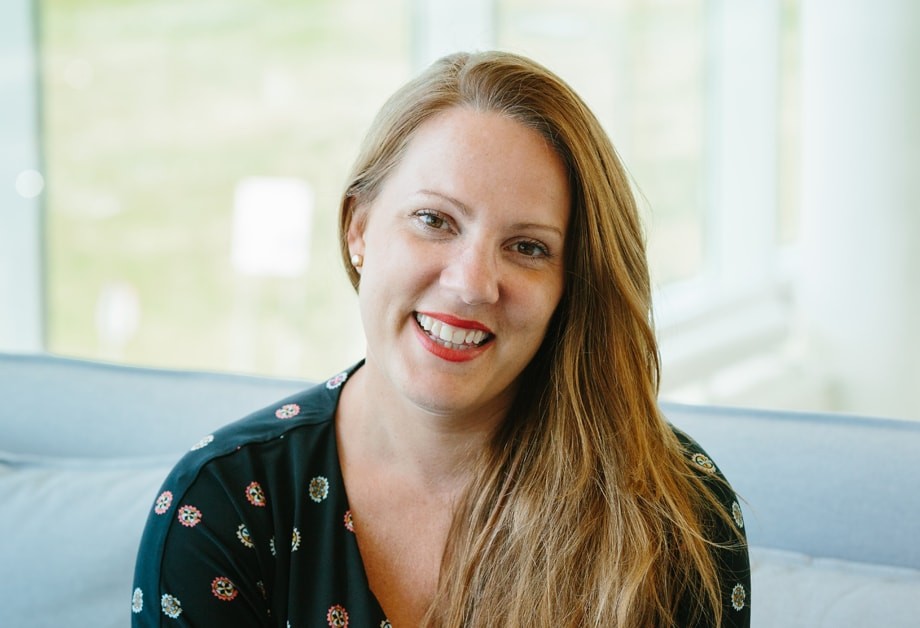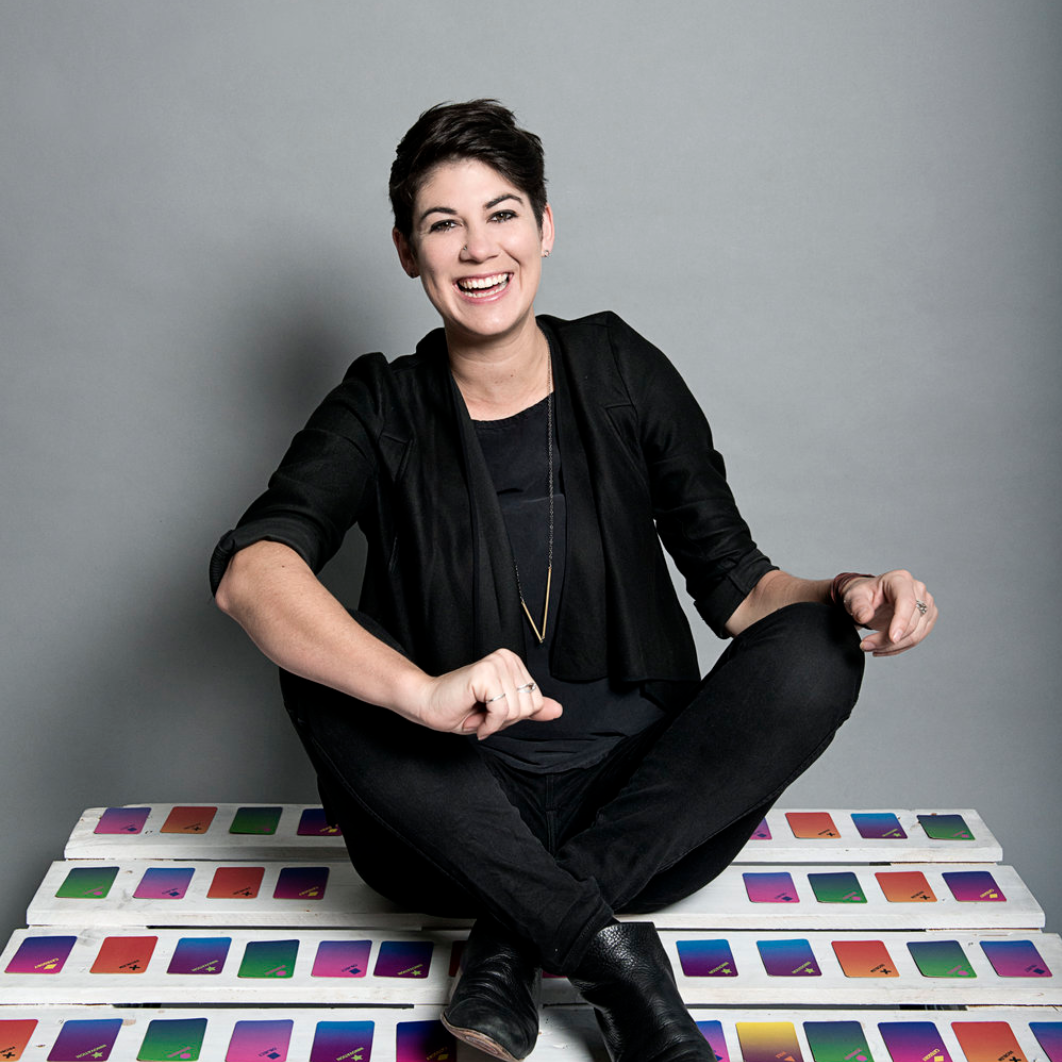Amy White: Great to have you with us here today. Thanks for joining us.
Leyla Acaroglu: My pleasure. Thanks for having me.
A: We know you have a huge passion in sustainability, but also with a focus on the circular economy. Where did that stem from?
L: Well, I went to study design because I wanted an interesting job, and I had this idea that being an industrial designer would mean I got to solve problems and make things. But in that process, I learned about the fact that everything is interconnected—that materials come from nature. I felt very underprepared for the task at hand. So I actually swapped degrees and went and studied sociology, majoring in sustainability.
I had a big interest in humans and how we operate and the planet. Through that journey, I became very interested in the supply chain and human needs, like how most of the goods and services are meeting our needs and desires, and then what the impacts are of those choices.
There’s this relationship between individual choice and producer design and the whole economy, essentially. And that eventually leads you to this idea of moving away from the linear economy—the unsustainable economy of taking resources, processing them, throwing them in holes in the ground or burning them, or having them ending up in the ocean. I’m interested in transforming and retooling this unsustainable economy, so that we’re more efficient with recycling and recapturing—and also really revolutionary with how we, as a human species, give back to the planet we’re indebted to.
A: It’s interesting that you have a background in both design and sociology. It gives a unique perspective of both producers and consumers. So what do you think designers for labels and packaging should be thinking about when they’re designing product?
L: You have competing demands when you’re a creative practitioner working in the professional industrial market. You have to meet the demands of your clients or your company and create a product that does the job.
I think starting with the core functionality of what you’re trying to achieve helps you reimagine how you deliver it. So, for example, if I were to think of packaging, it is, of course, about protecting your product. But predominantly it’s communicating the value of the product and the benefit of it to the consumer. It’s also potentially creating a particular amount of space on a shelf. So when you really list those functionalities and take away the pre-constructed idea of how you deliver that, you can come up with phenomenally fascinating alternative solutions.
For me, it’s really flipping the script on what’s normative. Like, “Oh, okay, this is the way we do it. Cereal boxes have to be like this.” And I think that’s really what a lot of young creatives are doing now—especially ones who have come through educational systems that have challenged them to think differently about the role of design and communication and to really find ways of meeting the needs in more sustainable and regenerative ways. You then come naturally to sustainability, which is essentially the economic, social, and environmental considerations harmonized. It’s about an equilibrium, not one being more dominant than another.
A: From a circular economy perspective, we definitely have a perception, whether it’s reality or not is another thing, that a lot of solutions for a circular economy are very local and that they’re not necessarily expandable on a global scale. Is that the right perception?
L: I think many of the perceptions we have right now about sustainability, the environment, circularity, and what the future holds, are basically just a bunch of myths and hypothetical situations. When it comes to any of these things, we don’t have all the answers; we’ve only just started doing the work. There are huge amounts of opportunity that we still have to uncover. It’s kind of a big mystery challenge treasure hunt. When it comes to this question of local versus global, I think that there are benefits and negative aspects to each one.
Every individual impacts the economy—the choices we make as a citizen or a professional—they’re having global impacts. You can’t avoid it. We are interacting with the global economy. When it comes to global players, like companies and organizations that have these huge impacts—like this tentacle reach across the whole planet—then of course they need to be thinking of the global scale with everything they’re doing. Because it’s not just in the actions they take, it’s actually in the inactions they take that often have the bigger impact. And if they don’t plan for the future, companies or organizations that aren’t willing to be pioneers of change will be the followers of those that are.
For me, it’s critical that we see pilot projects and experiments, and that we’re okay with a little bit of failure here and there. We need more of the testing, experimentation, prototyping, and the research to find innovative solutions that will bring about not just circularity. The ultimate goal, I think, is humans being regenerative so we give back more than we take, which would be a magical outcome to the challenges we face.
The challenge is to continually redesign how you achieve that functionality of a product and its packaging in the most efficient, effective, and desirable way. And then it kind of frees the creative process and the challenges because you’re like, “Huh, I wonder how I could meet this need in a different way with less resources and a more effective outcome.” But these are the creative challenges that are in front of us. In them lie many opportunities for experimentation and disruptive change.
A: I’m curveballing a little bit. What’s your favorite drink?
L: [Laughing] Alcohol—whiskey.
A: If you could design any whiskey bottle, how would it be?
L: A big one! [laughing]
A: A big one. Okay, so a huge label.
L: No, I think for me there’s something about the romanticism of products. I have a kind of “anti-disposability” life. You know, I work really hard not to have single-use products in my life as much as I can because I like to value things.
A: So it’s a refillable one, then?
L: Refillable? Yes. Like the magic one that would keep miraculously refilling with very expensive whiskey. But I feel like the product’s value proposition is really powerful, because the way you can create an emotional bond and all these things are really impactful. But when we’re looking at sustainability, it also means we have to leapfrog a lot of these preconceived ideas that if it’s “green” it’s a kind of beige color or something.
So I really love contemporary products that have taken on the sustainability challenge and have made multi-use or multi-functional products. Like a nice whiskey bottle that can later become a vase or something that adds value and isn’t just discarded. I think that’s really powerful.
A: So I heard you describe Avery Dennison earlier, because part of your communication earlier today was about rethinking a problem into an opportunity, the pain point along that lifecycle. But I heard you reframe how you think Avery Dennison should look at ourselves. Can you explain that?
L: Yeah. Well I think any company has their primary functionality, right? So if you’re a beverage company, then you could say, “we’re a beverage company.” But ultimately what you’re doing is supplying drinkable liquids into the economy at a fast pace, right?
So if you reimagine and define what you deliver—say Avery Dennison, you guys deliver the ability to communicate information on multiple substrates to different people—so you’re literally the conveyors of information on substrates. There are multiple ways you could reframe that. But rather than saying, “we’re a label company,” because labels is just the medium that you’ve designed for, but you are essentially communicating to people how to walk through an airport, whether or not a drink is good for a kid to drink. There are so many different things.
The challenge is to continually redesign how you achieve that functionality in the most efficient, effective, and desirable way. And then it kind of frees the creative process or the challenges as well because you’re like, “Huh, I wonder how I could meet this need in a different way with less resources and a more effective outcome.” But these are the creative challenges that are in front of us. In them lie many opportunities for experimentation and disruptive change.
A: And as a communicator, I definitely like that description. Thank you very much.
L: My pleasure. Thanks for having me.


